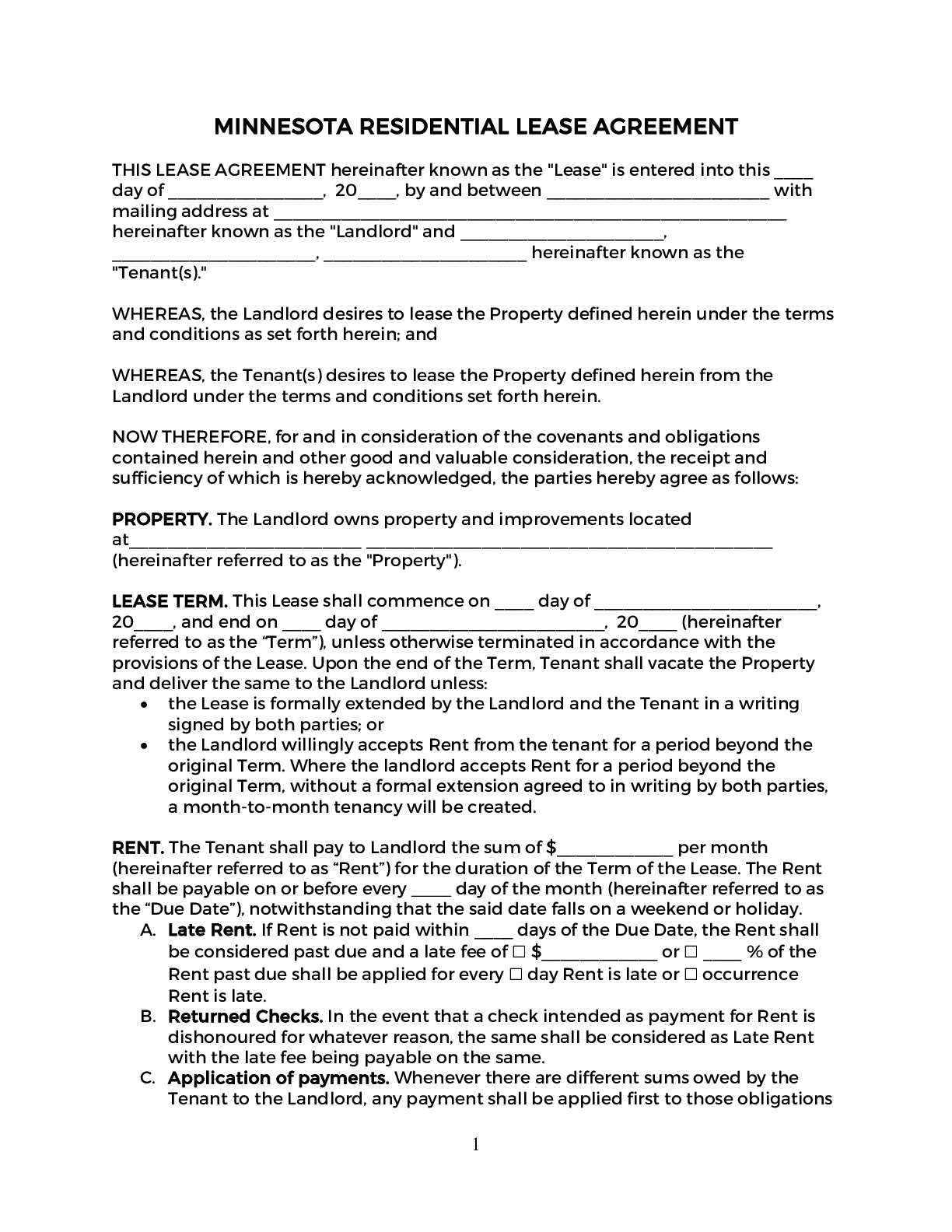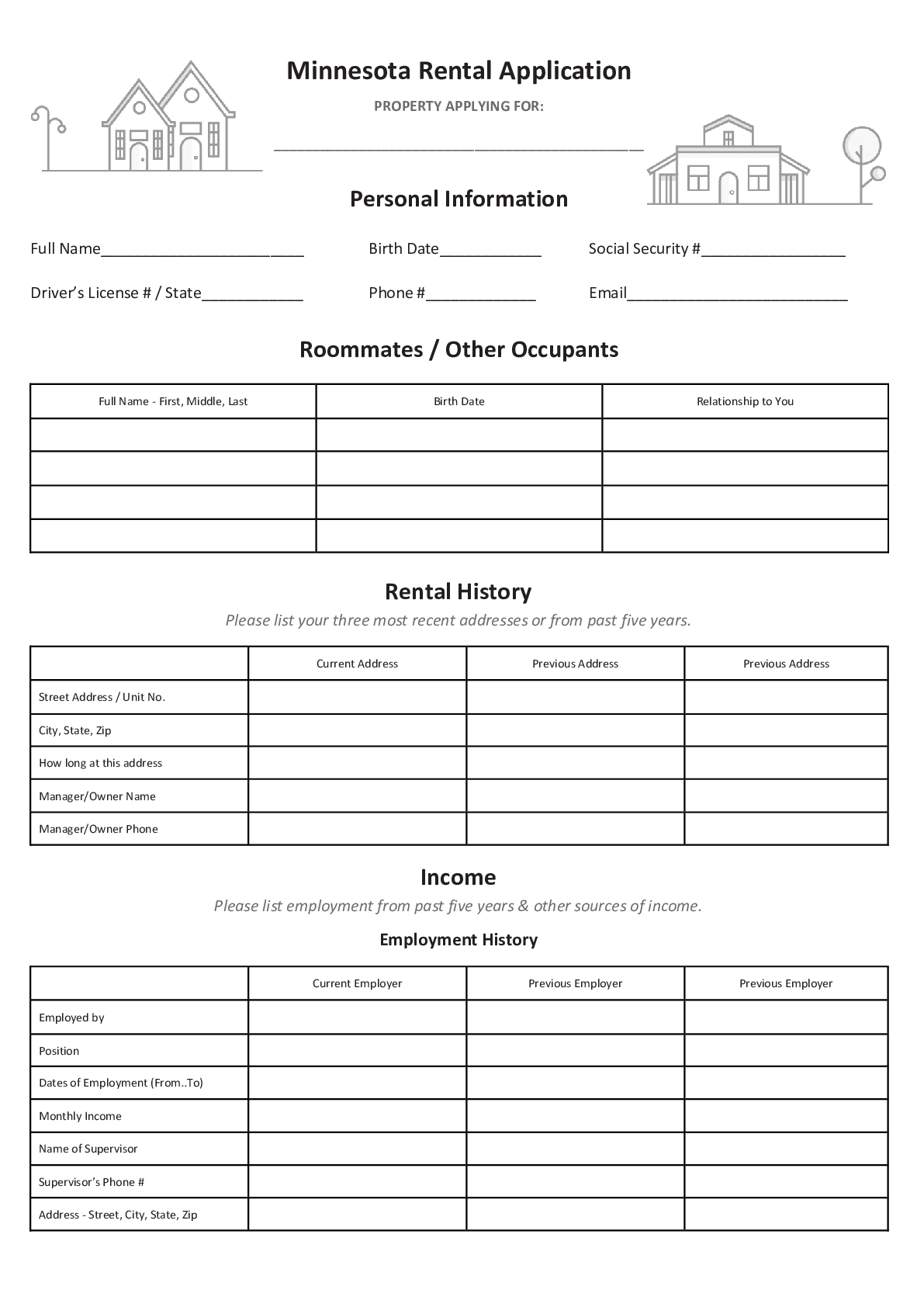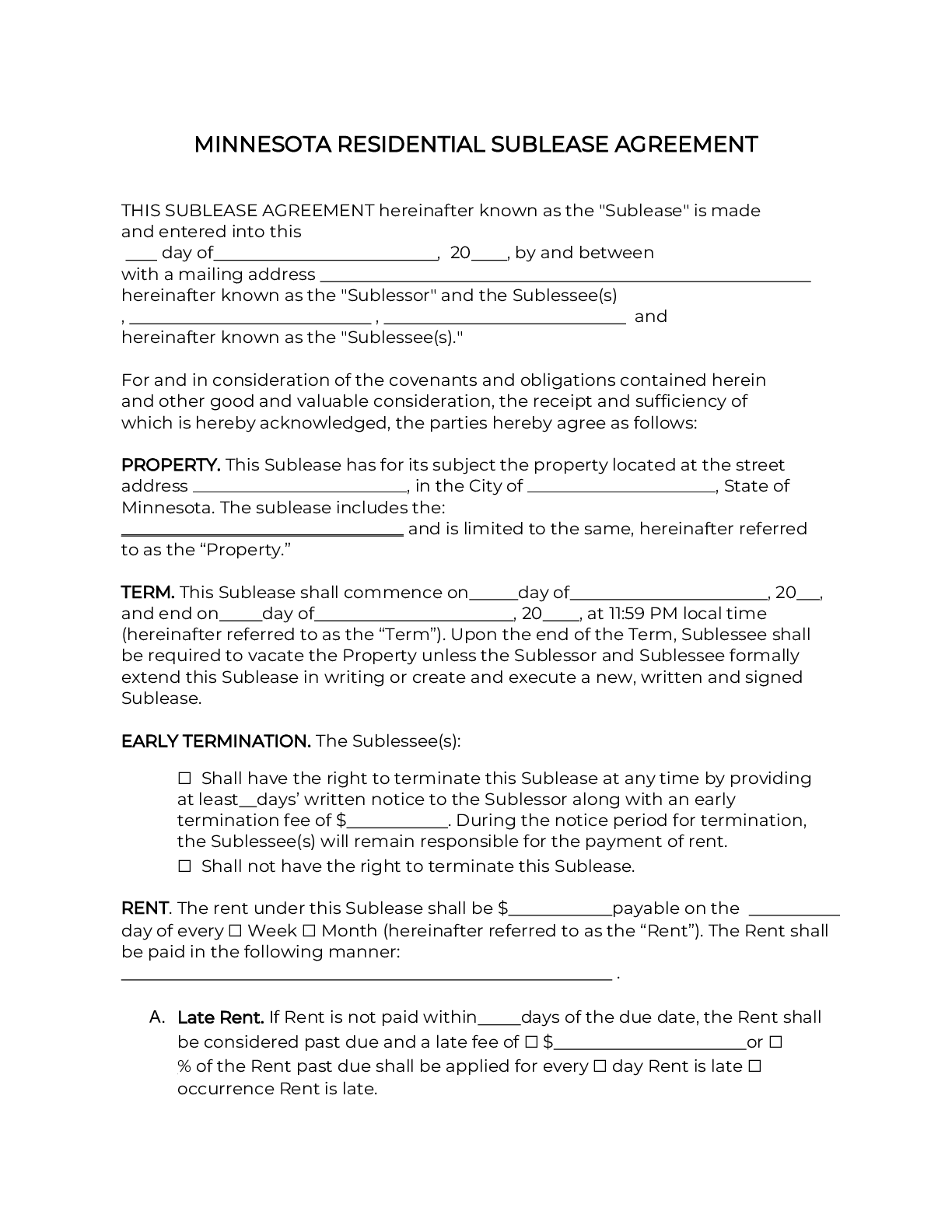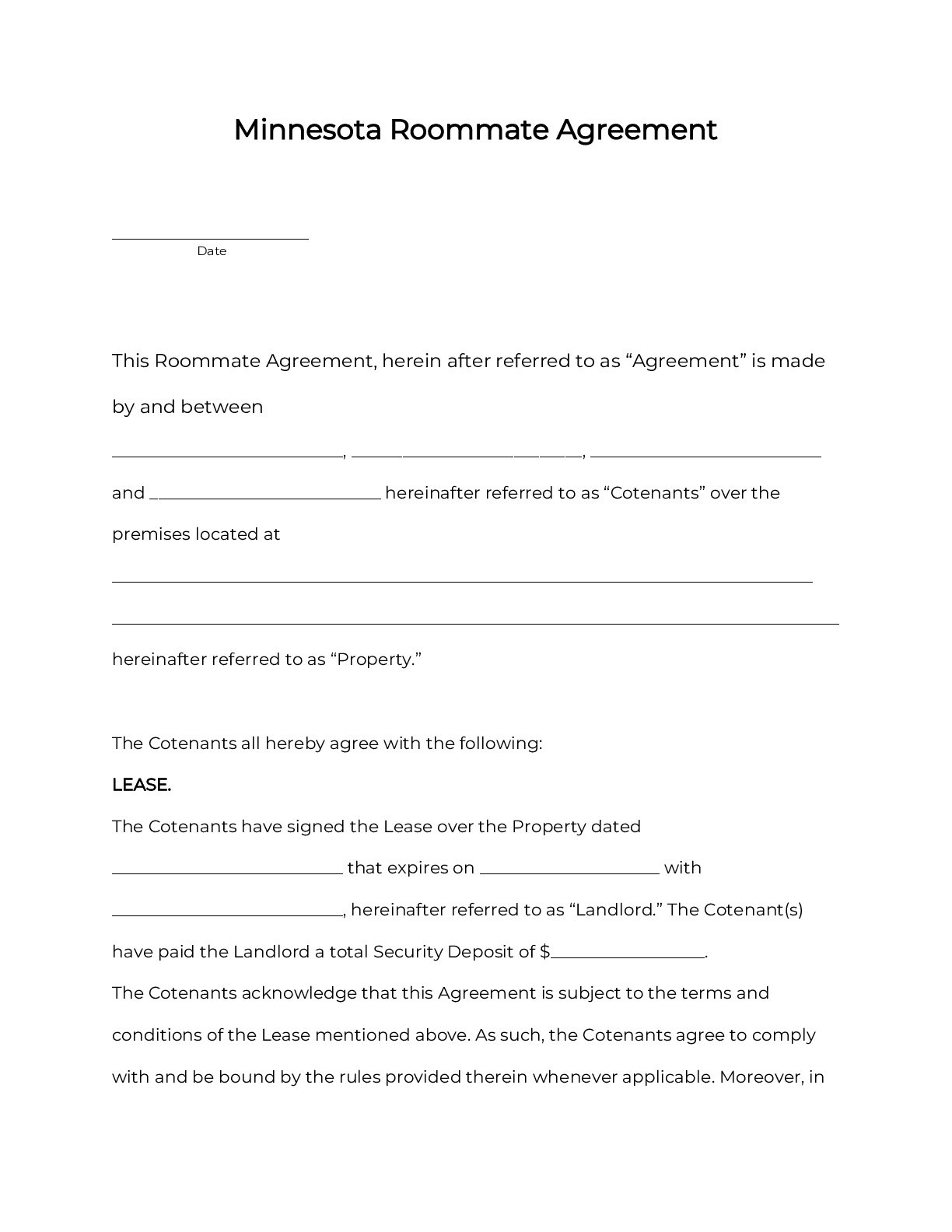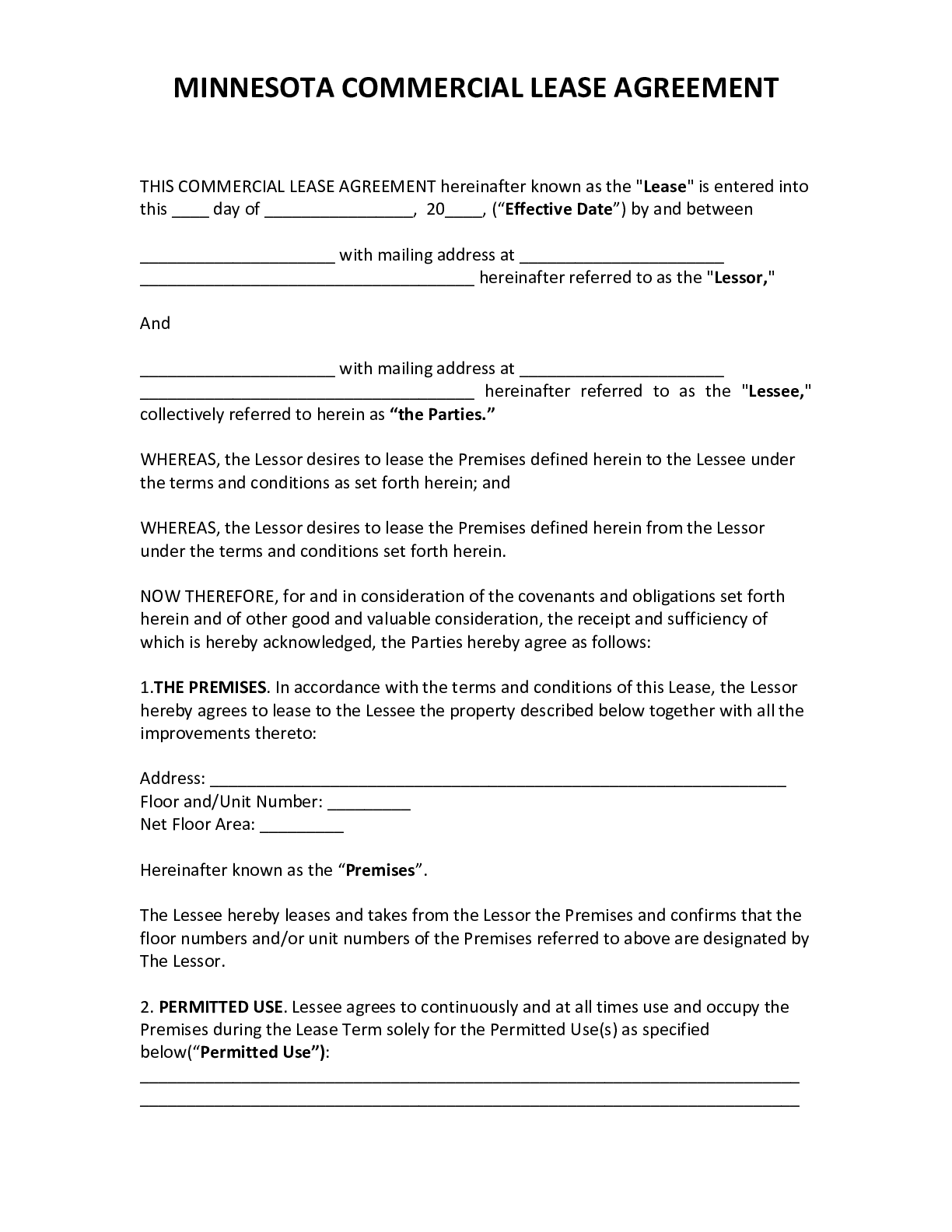A Minnesota rental agreement is a legal contract between a landlord overseeing a rental property and a tenant using the property. Minnesota landlord-tenant law governs and regulates these agreements.
Minnesota Rental Agreement Types
A Minnesota roommate agreement is a legal contract between two or more people (“co-tenants”) who share a rental property according to rules they set, including for things like splitting the rent. This agreement binds the co-tenants living together, and doesn’t include the landlord.
Minnesota Required Lease Disclosures
- Total Monthly Payment Disclosure (required for all leases) – Minnesota leases must total up all rent plus all non-optional fees, on the first page. The lease must clearly describe this amount as the “Total Monthly Payment.”
- Landlord’s Name and Address (required for all leases) – Minnesota leases must contain the name and address of the landlord (or authorized agent). This allows required communication (for example, about repairs) to happen in a smooth way. For this reason, most leases also include phone numbers and email addresses.
- Late Fee Disclosure (required for some leases) – Minnesota only enforces properly disclosed late fees and returned check fees. Late fees may not exceed 8% of the past due balance and must be agreed in the lease. Returned check fees have a $30 limit. The landlord’s place of business must post the fee amount in a highly visible location in order to collect it.
- Inspection and Condemnation Disclosure (required for some leases) – Minnesota landlords must give a disclosure whenever the property has a citation about an outstanding health and safety inspection issue. If inspection has already taken place, the landlord may provide notice that the inspection report is available upon request.
- Financial Distress Disclosure (required for some leases) – Minnesota properties facing foreclosure must include the pending date. This ensures tenants are not removed from their homes without notice.
- Shared Utility Agreement (required for some leases) – Minnesota landlords may not bill electricity as a shared utility. Shared gas, water, or sewer service must be accompanied by a statutory notice explaining how utilities are apportioned and what rights a tenant has for shared utilities.
- Covenant of Landlord and Tenant Not To Allow Unlawful Activities (required for all leases) – Minnesota leases must contain an agreement that the landlord and tenant won’t allow unlawful activity on the premises.
- Initial Inspection Option Disclosure (required for all leases) – Minnesota landlords have 14 days after the tenant moves in to offer the option of an initial property inspection with a move-in checklist. This documents the property’s condition for later accurate deduction from the security deposit.
- Lead-Based Paint Disclosure (required for some leases) – Landlords must provide an EPA-approved disclosure and informational pamphlet to tenants renting any property built before 1978.
To learn more about required disclosures in Minnesota, click here.
Minnesota Landlord Tenant Laws
- Warranty of Habitability – Minnesota landlords can only rent out habitable property. This means providing certain basic health and safety features like heat, plumbing, and electricity. Landlords must repair any issues within 14 days after proper notice. Failure to repair lets a tenant sue the landlord or get a court ordered rent reduction. Tenants usually can’t repair and deduct.
- Evictions – Minnesota landlords may evict for rent nonpayment, lease violations, or illegal acts, among other things. Before filing eviction, landlords must serve tenants with prior notice to pay, comply, or quit, depending on the eviction type. The time required to finalize an eviction depends on the guidance of an applicable lease agreement.
- Security Deposits – Minnesota does not limit the maximum amount of a security deposit. When a lease ends, a landlord must return any unused portion of a tenant’s security deposits within 21 days. This return period is only 5 days if the lease ended due to condemnation of the property.
- Lease Termination – A tenant can end a month-to-month lease in Minnesota with notice equal to the frequency at which they make rent payments. A fixed-term lease usually can’t be ended early without active military duty, domestic violence, landlord harassment, or uninhabitable property.
- Rent Increases and Fees – Minnesota state law prevents local areas from setting their own rent increase rules. A landlords must give one month of advance notice before a rent increase. The state allows landlords to charge most types of fees, as long as they are outlined in a lease agreement.
- Landlord Entry – Minnesota landlords have the right to enter rental property for reasonable business purposes, like maintenance and inspections. Unless it’s an emergency, they must give at least 24 hours of advance notice before an entry.
- Settling Legal Disputes – Minnesota lets small claims court (also known as Conciliation Court) hear landlord-tenant disputes, as long as the amount in controversy is under $15,000. Minnesota has diverse small claims courts. Not all of them accept eviction cases or have the same value in controversy standard for evictions.
To learn more about landlord tenant laws in Minnesota, click here.
Additional Resources
- Entering into the Agreement – Landlords and Tenants – This resource is provided by the state Attorney General. It discusses common landlord-tenant situations, such as requirements for executing a valid lease.
- Department of Administration – Leasing Services – This page is intended for people who are renting property from the state government. However, it contains many sample lease provisions relating especially to environmental protection issues. These provisions easily can be included in most leases, if desired.
Sources
- 1 Minn. Stat. § 604.113(2)(a)
-
A service charge, not to exceed $30, may be imposed immediately on any dishonored check by the payee or holder of the check, regardless of mailing a notice of dishonor, if notice of the service charge was conspicuously displayed on the premises when the check was issued.
Source Link




